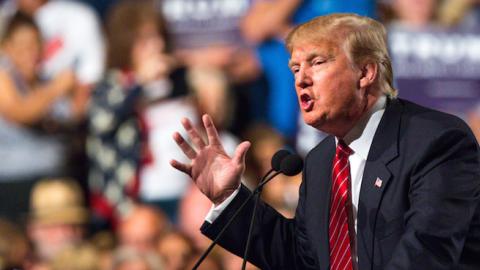Most political analysts agree that Donald Trump won the presidency on the backs of long-suffering blue-collar workers in industrial states. His campaign was propelled by a promise to revive manufacturing through trade, tax and regulatory policies. After nearly three years in office, the results are unfortunately tepid in terms of engineering a real boom in this sector, and the trends in recent months signal spreading weakness. Nonetheless, manufacturing is stronger than it was when he took office and policy support is still in place for growth. Headwinds from trade policy and political uncertainty, however, are restraining a more robust growth path.
2017 and 2018 were generally positive for U.S. manufacturing due to the change in policies by Trump and allies in Congress. From the start, Trump signaled strong support for industry by reversing many Obama administration policies which favored environmental, consumer-related and climate outcomes over those helpful to industry. Many regulations were rolled back, especially those discouraging oil and gas production, corporate taxes were reduced, in part by accelerating depreciation schedules for capital investment, and Trump used the bully pulpit to encourage the return of production to the United States. Trade policy initiatives have challenged the unfair practices of China and others using bilateral and WTO-based tools, and new trade agreements with Canada and Mexico and with South Korea were clearly designed to favor domestic production. Trump also slapped tariffs on friend and foe alike to help heavy industry in metals and kitchen appliances. The combination of these measures helped boost confidence and incentivized new investment. To take but one example, the boom in oil and gas production, together with accelerated depreciation, led to a tsunami of new chemical plants and Liquid Natural Gas (LNG) export facilities. Many European and Asian companies found it advantageous to build plants in the U.S. due to lower energy prices and the favorable tax structure for investment.
Solid data support the view that manufacturing improved in the first two years of the Trump presidency, and probably at least through the first half of 2019. Overall employment in the sector grew by almost half a million jobs since Trump took office, after falling by almost 200,000 in the Obama years. Total manufacturing output in real dollars reached an all-time high in mid-2019, capacity utilization is back to post-war norms, and exports of goods, which are ten times those of agricultural products, have increased by about 15 percent since January 2017. Capital investment recovered from a downturn in 2016 to post solid gains, especially in 2018 as tax reform took full effect.
Despite the positive momentum going into 2019 there has been a marked slowdown in the manufacturing sector starting around mid-year. The Institute for Supply Management’s monthly survey of manufacturing dipped into negative territory in August and September, hitting a low of 47.8 (below 50 signals contraction), a level not seen since the Great Recession. Subcategories of export orders, employment, and overall new orders were especially weak. Capital investment declined by one percent in the second quarter, led by a downturn in aircraft sales. Total goods exports are set to decline slightly this year for the first time since 2016. A Wall Street Journal survey of economists this month revealed that two-thirds of respondents think manufacturing is in recession already. Since somewhere around 30 percent of U.S. GDP is in manufacturing (including directly dependent sectors like mining, transportation and business services), this could lead to a general economic slowdown or recession if the sector does not reverse course.
There are some hopefully shorter-term issues behind this weakness, especially the General Motors strike and the production slowdown at Boeing. But confidence measures are also slowing more broadly and helping restrain capital investment. The University of Chicago Booth School’s important index of economic uncertainty is at an all-time high. Erratic swings in trade policy and divisiveness in Washington are clearly factors in undermining confidence and in turn investment.
A potentially ominous sign for President Trump is that manufacturing employment growth has turned negative this year in the key swing states of Pennsylvania, Wisconsin and Michigan that provided the difference to his political fortunes in 2016. The political impact of Trump’s trade policies was undoubtedly a reason for him to accept a partial deal with China earlier this month. This deal does help another important political constituency, agriculture, more than industry. The same can be said for the Japan mini-deal in early October. But these agreements do reduce tensions and may be a start in improving protection of intellectual property and digital trade that are crucial to manufacturing.
Democrats in the U.S. House of Representatives now are the key to finalizing a trade accord, USMCA, which more directly addresses manufacturing issues. They also are of course key to lowering the level of political uncertainty, but obviously are unlikely to help the President in this regard. They could also help by getting behind a robust infrastructure program, which would bolster manufacturing greatly, but this too is off the table. The next round of negotiations with China will be extremely difficult since it addresses the structural reforms that would change the existing Chinese growth model and would establish a more even playing field for U.S. manufacturing. Our European friends could be helpful in convincing the Chinese to change, but they are so caught up in their own political problems and are turning in a more protectionist direction that they are not likely to join Trump, who is less popular than Putin and Xi in Europe, in taking on the Chinese. If Trump were to pull the trigger on auto tariffs in December it would further alienate the Europeans, provoke counter-retaliation, and propel the manufacturing economy further into negative territory. In short, the prospects for positive changes in the policy environment for a manufacturing turnaround are not terribly promising as we approach 2020.
Read in Forbes



















